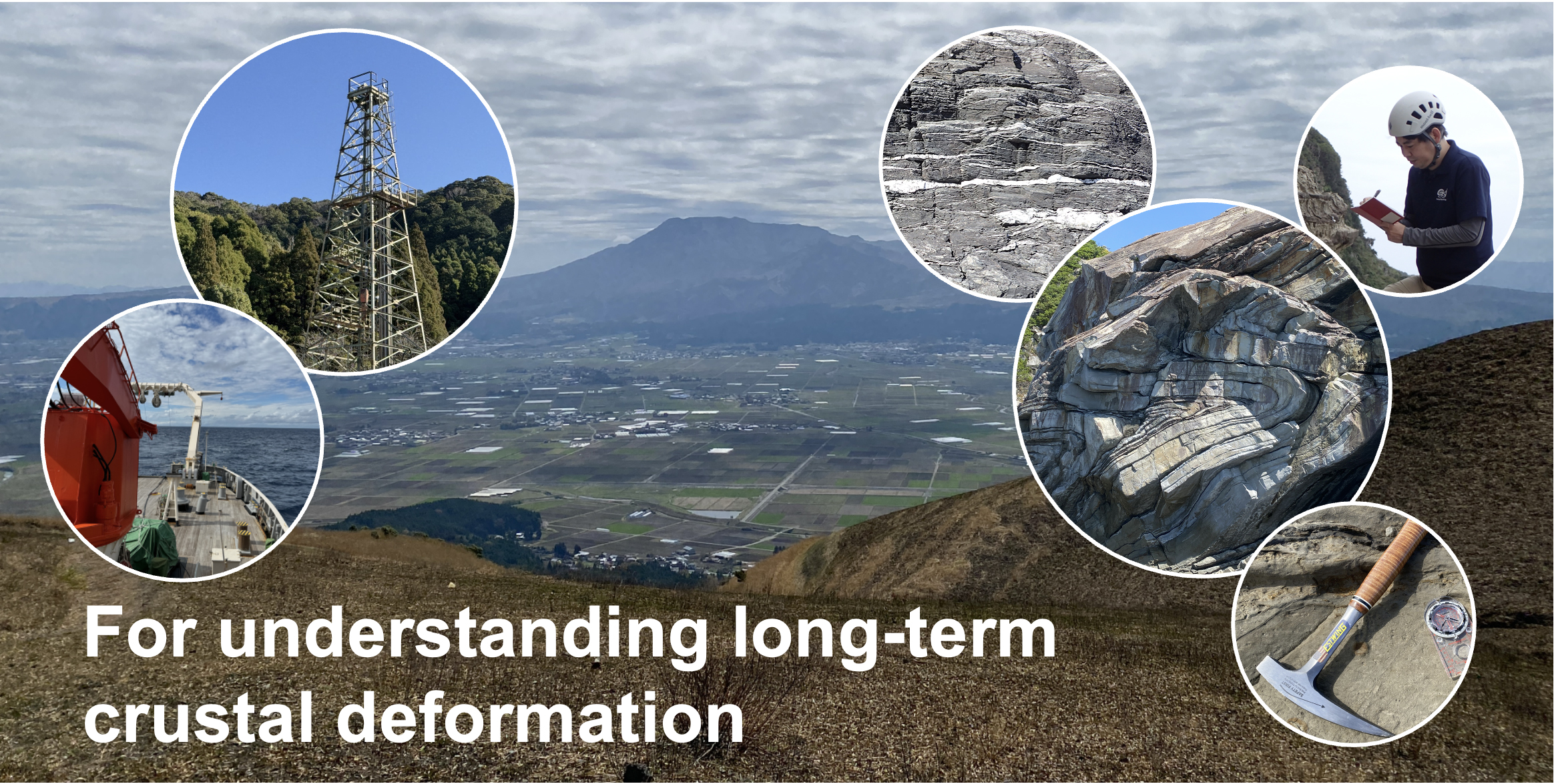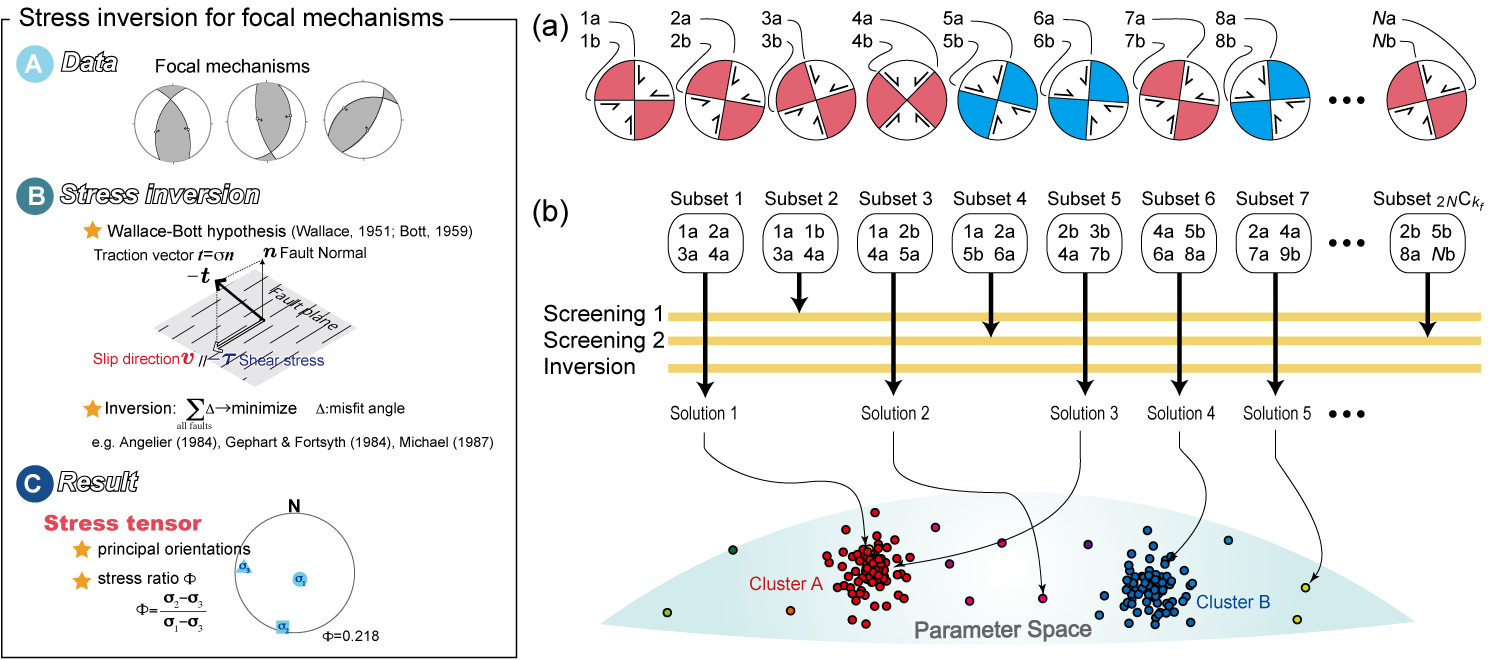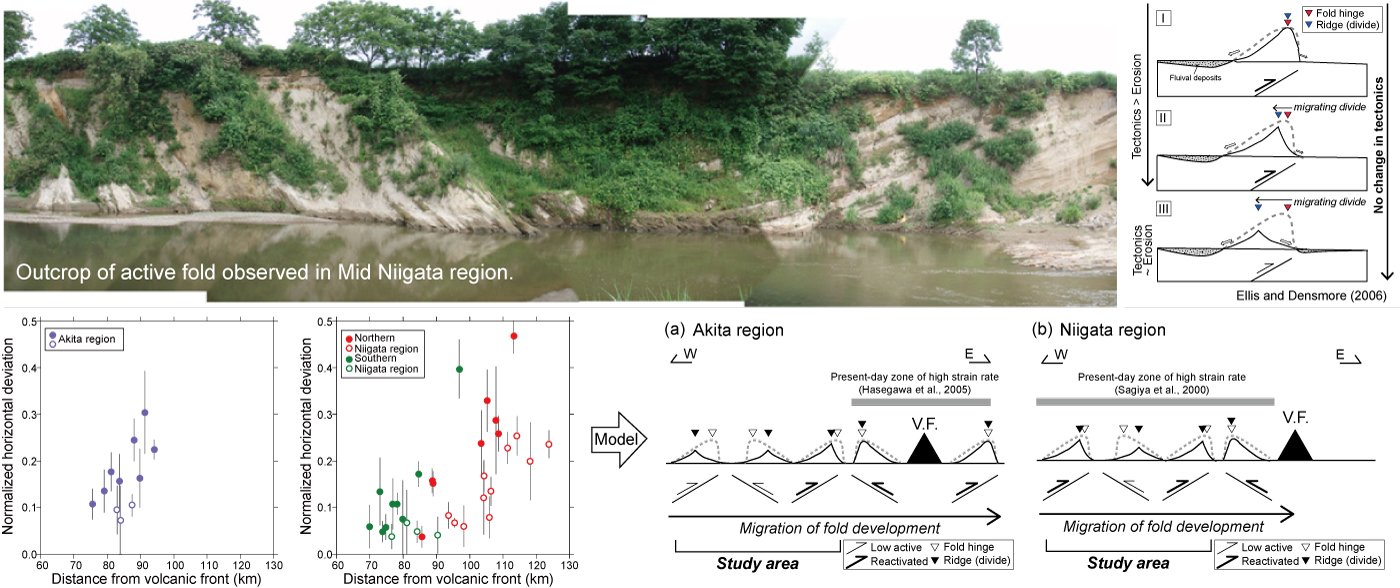ORCID iD https://orcid.org/0000-0003-1222-2578
Director, Research Planning Office and
Research Institute of Earthquake and Volcano Geology (web)
Geodynamics Research Group
E-mail: otsubo-m*aist.go.jp (Please replace * to @)
New paper accepted! Otsubo et al. Localized fluid discharge by tensile cracking during the post-seismic period in subduction zones. Scientific Reports. open access (Press release from AIST)
- Structural Geology, Tectonophysics, Geodynamics
- 2006 Ph.D. Kyoto University, Kyoto, Japan
- (Supervisor: Prof. Yamaji, web)
- 2003 M.Sc. The University of Ryukyus, Okinawa, Japan
- 2001 B.Sc. The University of Ryukyus, Okinawa, Japan
- 2006-Present Geological Survey of Japan/AIST, Ibaraki, Japan (web)
- *Stayed in U.S. Geological Survey (Menlo Park, CA, USA) from March 06, 2017 to December 28, 2017
- The information of underground geological characteristics, dynamic geological processes, and the long-term stability of geological environments are important to understand possibilities of the volcanic activity and fault movements. To provide technical, neutral, and reliable information, we, a member of the Geological survey of Japan, will make an extensive investigation of deep geological environments by using Structural geology, Tectonics, and Seismology. We cordially aim to the systematic understanding of the present dynamics of the earth, by the elucidation of the nature and mechanism of relating geological phenomena.


- Field surveys in subduction zone
- Stress tensor inversion (Geological and seismological fault data)
- Numerical analysis by using Geomorphological data (e.g., DEM)
- Crack density analysis around fault zone
- Flow analysis (Permeability analysis under cracking system) around fault zone
- Scientific drilling (IODP Exp. 348, 358, NanTroSEIZE)
- Fault gouge Cups (Sake Cups: Topics)
1. Stress tensor inversion (Geological and seismological fault data)
Stress tensor inversion for determination of stresses from heterogeneous focal mechanism data (Otsubo et al., 2008, Tectonophysics) PDF
A new method is proposed to separate stresses from earthquake focal mechanism data (double couple component of focal mechanisms) from spatially or temporarily varying state of stress. The underlying multiple inverse method was originally devised for geological fault-slip data, but we have adapted its resampling scheme to focal mechanism data to cope with the nodal planes ambiguity problem. The stresses compatible with a dataset are recognized as the clusters of reduced stress tensors. The clusters are identified with the k-means clustering. The uncertainty of the stresses are evaluated from the spread of the clusters. The technique is shown to successfully determine valid stresses from simulated data. We have also applied the technique to natural data from southwestern Japan. You can get softwares on the stress tensor inversion from Yamaji Lab. (Kyoto University, Japan).

Temporal slip change based on curved slickenlines on fault scarps (Otsubo et al., 2013, Tectonophysics) PDF
We observed co-seismic slickenlines caused by the 2011 Mw 6.6 Iwaki earthquake along the Itozawa fault coseismic surface rupture zone. The 2011 Iwaki earthquake occurred just one month after the 2011 Mw 9.0 Tohoku earthquake. The structures are characterized by co-seismic curved slickenlines and slickenlines with cross-cutting relationships on the fault scarps. The curved slickenlines indicate that the direction of fault motion during the rupture of the 2011 Iwaki earthquake shifted fromnormal faulting with a left-lateral component to that with a right-lateral component. The angular misfits between the slip direction predicted from the NW-SE trending extensional stress before the 2011 Iwaki earthquake and that predicted from each component of the curved slickenlines on the fault scarps are ~33° to 65° and ~2° to 17°, respectively. Themisfit changes show that the co-seismic slip direction, discordant with the extensional stress, shifted to normal faulting and is explained by the stress during the faulting. These results suggest that co-seismic rupture processes near the surface are a key in revealing the detailed dynamic processes of a seismic event.

Landward migration of active folding based on topographic development of folds (Otsubo et al., 2016, Quaternary International) PDF
The eastern margin of the Japan Sea, northeast Japan, lies in a strongly compressional area, and
contractional deformation in the region is ongoing. We reconstructed the temporal and spatial evolution of contractional deformation across the Tohoku district on the eastern margin of the Japan Sea, by using surface geologic and geomorphologic data. We measured the distance from the fold hinge to the topographic ridge line in antiforms, developed by surface uplift, associated with fold growth under the EeW to WNW-ESE compressional stress regime. The topographic development of fold structures, developed in the region since the Pliocene, is consistent with the activity of the folds. When the folding that generates the uplift becomes inactive, the topographic contrasts between hinge and ridge location can be remarkable. Spatial variations in this parameter are consistent with the systematic eastward migration of fold growth in the area. The documentation of fold-related topography thus provides important information for understanding the dynamics of folding along the eastern margin of the Japan Sea.
This project is supported by the Grant-in-Aid for Scientific Research on Innovative Areas (KAKENHI No. 2608, from July 1, 2014 to March 31, 2019) from the Ministry of Education, Culture, Sports, Science and Technology (MEXT), Japan.

Localized fluid discharge by tensile cracking during the post-seismic period in subduction zones (Otsubo et al., 2020, Scientific Reports) PDF
It is thought that extensional structures (extensional cracks and normal faults) generated during the post-seismic period create fluid pathways that enhance the drainage of the subducting plate interface, thus reducing the pore pressure and increasing fault strength. However, it remains to be elucidated how much pore fluid pressure decreases by the extension crack formation. Here we examined (i) the pore fluid pressure decrease, and (ii) the degree fault strength recovery by the extension crack formation during the post-seismic period by analyzing extension quartz veins exposed around the Nobeoka Thrust, southwestern Japan. The Nobeoka Trust is an on-land analog of the modern splay fault at shallow depths (~ 8 km) in the Nankai Trough. The poro-elastic model of extensional quartz vein formation indicates that the formation of extensional cracks only releases up to ~ 7–8% of the total pore fluid pressure at ~ 8 km depth. The pore pressure around the Nobeoka Thrust was close to lithostatic pressure during the entire seismic cycle. The estimated effective frictional coefficient along the Nobeoka Thrust after this small fluid-loss by the extensional crack formation does not exceed 0.15. Hence, the pore fluid pressure reduction due to the post-seismic extensional cracks contributes little to increase the fault strength of the megasplay fault. Related papers:
- Sibson (2013, Tectonophysics)
- Saishu et al. (2017, Scientific Reports)
- Gudmundsson (1999, Geophys. Res. Lett.)

